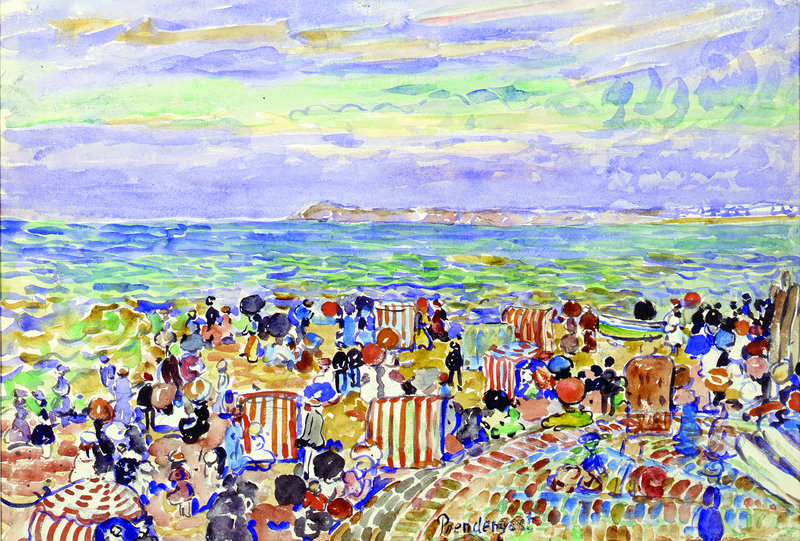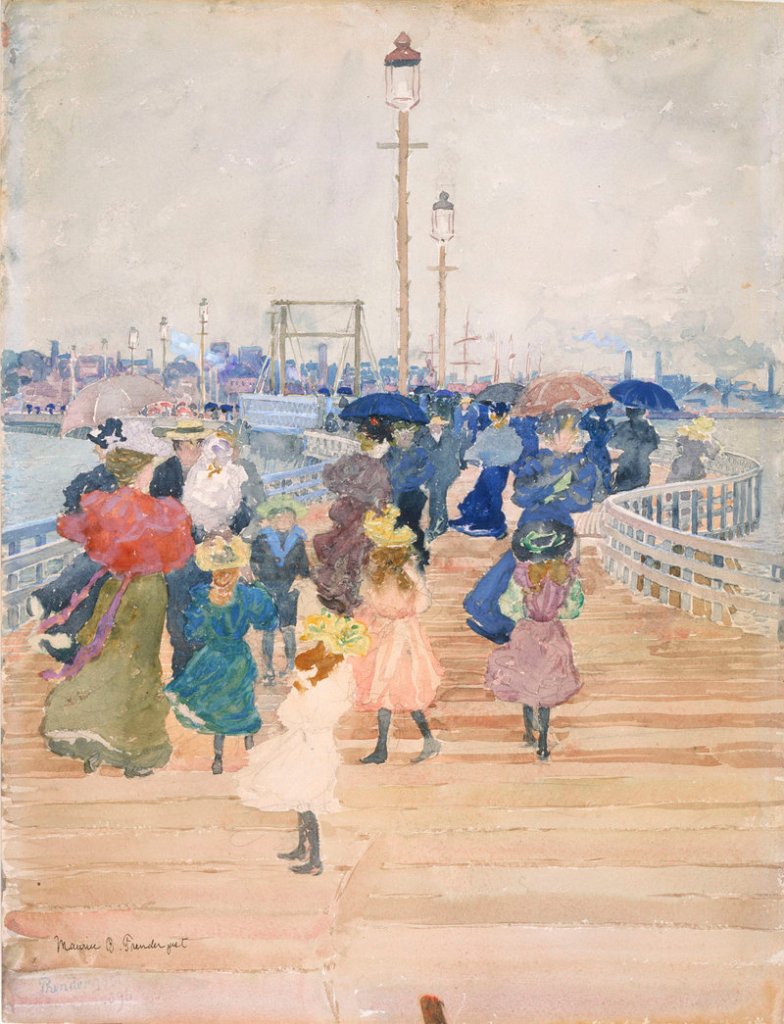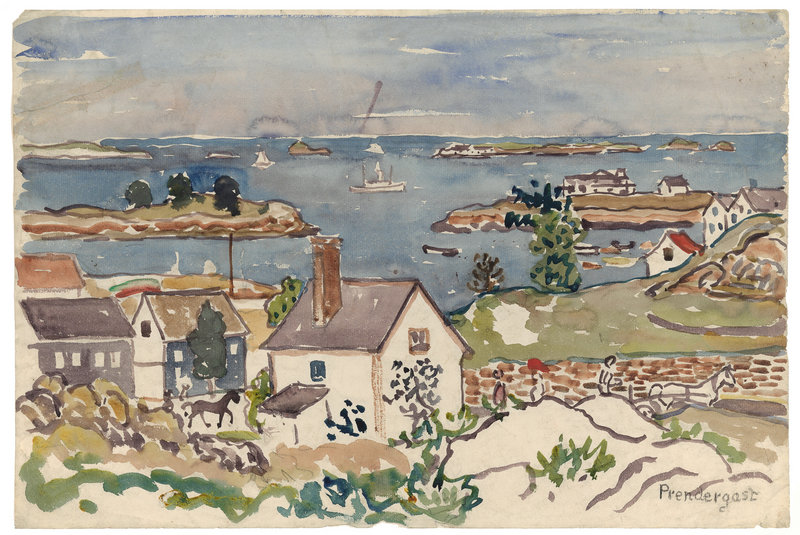If ever an exhibition makes one want to pack a picnic and head to the beach to celebrate the Fourth of July, Maurice Prendergast’s “By the Sea” will do the trick.
The exhibition, which opens Saturday and runs through early October at the Bowdoin College Museum of Art in Brunswick, feels like a summer vacation. It includes more than 90 paintings inspired by our society’s love of, and fascination with, the seashore.
“No artist captured the holiday atmosphere of the New England coast better than Maurice Prendergast,” exhibition co-curator Nancy Mowll Mathews said in a statement.
Mowll Mathews recently retired from the Williams College Museum of Art, and is a Prendergast scholar. In an interview at Bowdoin last week, she explained her long-held fascination with the artist, who was born in Newfoundland, Canada, and spent much of his artistic life in Boston and New York.
“He was so popular,” she said, noting the artist’s inclusion in the landmark Armory Show in New York in 1913. “Prendergast was the American equivalent of the French Modernists. He was the one who could hold his own against Duchamp, Matisse or Picasso.”
“By the Sea” features more than nine works in a variety of media — all inspired by seashore leisure — as well as sketchbooks and oil studies. Many of the paintings are set in Maine, most notably Brooksville and Ogunquit.
It feels like a very different exhibition than the other recent summer shows at the Bowdoin museum for at least one notable reason: People.
The previous three summer shows featured the work of Winslow Homer, Edward Hopper and William Wegman. Homer showed the rugged and wild America. Hopper’s works were completely void of humans. And Wegman’s work suggested human activity, but most of the creatures depicted in his art are four-legged and not two.
Prendergast filled his canvases and works on paper with people — people, people everywhere.
“What he was really interested in was to respond to the public experience and the public spaces where communities come together in a joyful and relaxed way,” said Joachim Homann, the Bowdoin museum’s curator.
Prendergast (1858-1924) traveled widely on both sides of the Atlantic. He was among the American painters who embraced Europe and promoted European art and artists in America.
He studied in Paris in the late 1800s, and particularly admired the work of Paul Cezanne for his use of color. Later, he traveled to Italy and made paintings of Venice that remain some of his most popular works today.
Prendergast became popular around the turn of the century with major shows in Chicago and York. His inclusion in the so-called Armory Show of 1913 — he had a half-dozen paintings in the show — signaled the extent of his popularity and acceptance.
The Armory Show was the first large exhibition of modern art in America, and is still considered one of the most important and influential exhibitions in U.S. history a century later.
“A lot of artists struggled with how to be modern without being imitative,” Mowll Mathews said. “He did it.”
Prendergast was also a big advocate of leisure. He lived during a time of great expansion and growth in America. Especially in the East, the cities were full of factories and productivity, particularly with recent immigrants.
With his paintings, Prendergast showed people at play. Most of the works in “By the Sea” are populated by throngs of people enjoying themselves and having fun.
“He was trying to promote leisure for the public good,” Mowll Mathews said. “He viewed leisure as a good thing.”
Amen to that, especially with the summer holidays at hand.
Staff Writer Bob Keyes can be contacted at 791-6457 or:
bkeyes@pressherald.com
Twitter: pphbkeyes
Send questions/comments to the editors.






Success. Please wait for the page to reload. If the page does not reload within 5 seconds, please refresh the page.
Enter your email and password to access comments.
Hi, to comment on stories you must . This profile is in addition to your subscription and website login.
Already have a commenting profile? .
Invalid username/password.
Please check your email to confirm and complete your registration.
Only subscribers are eligible to post comments. Please subscribe or login first for digital access. Here’s why.
Use the form below to reset your password. When you've submitted your account email, we will send an email with a reset code.